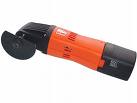No edit summary |
No edit summary |
||
| Line 2: | Line 2: | ||
== About == |
== About == |
||
A cast cutter is a device that removes cast material without damaging underlying tissues (e.g. skin), and the walking heel, among others. Pneumatic cast saws designed to cut casts using a serrated blade that oscillates at a very high speed perpendicular to the axis of the machine without full rotation. These saws are handheld instruments with a pneumatic motor, a mechanism to drive the blade, and a hose connected to the pressurized gas source. Cast saws are usually handheld instruments and are available less frequently as tabletop stationary devices. Oscillating pneumatic cast saws are used to cut casts using dedicated plaster or fiberglass blades for cast removal, creation of a hinged cast, or to open a window in the cast to view underlying tissue; they may also be used to cut plaster and/or fiberglass jackets, dressings, and molds. |
A cast cutter is a device that removes cast material without damaging underlying tissues (e.g. skin), and the walking heel, among others. Pneumatic cast saws designed to cut casts using a serrated blade that oscillates at a very high speed perpendicular to the axis of the machine without full rotation. These saws are handheld instruments with a pneumatic motor, a mechanism to drive the blade, and a hose connected to the pressurized gas source. Cast saws are usually handheld instruments and are available less frequently as tabletop stationary devices. Oscillating pneumatic cast saws are used to cut casts using dedicated plaster or fiberglass blades for cast removal, creation of a hinged cast, or to open a window in the cast to view underlying tissue; they may also be used to cut plaster and/or fiberglass jackets, dressings, and molds. |
||
| + | |||
| + | == Maintenance Data== |
||
| + | Listed are recommended maintenance cycles that can be loaded within local computerized maintenance management systems. These cycles can also be used to estimate average monthly cycle inspections, PMs, and calibrations with average technician hours. This device is [[corrective maintenance]] only. ''Disclaimer: It is recommended to consult OEM cycles.'' |
||
| + | |||
| + | {| style="text-align:center; float:right; font-size:85%; margin-left:2em; margin:auto;" class="wikitable" |
||
| + | |+''Maintenance cycles (in months) with estimated technician hours (in minutes)'' |
||
| + | ! !! Months !! Minute(s) !! [[Risk Level]] |
||
| + | |- |
||
| + | ! [[Safety Inspection]] (INSP) |
||
| + | | 0 || 0 || No Significant |
||
| + | |- |
||
| + | ! [[Preventive Maintenance]] (PM) |
||
| + | | 0|| 0 || N/A |
||
| + | |- |
||
| + | ! [[Calibration]] (CAL) |
||
| + | | 0 || 0 || N/A |
||
| + | |- |
||
| + | ! [[Schedule Parts Replacement]] (SPR) |
||
| + | | 0 || 0 || N/A |
||
| + | |- |
||
| + | ! [[Acceptance Inspection]] (AI) |
||
| + | | 0 || 120 || N/A |
||
| + | |} |
||
| + | |||
| + | <br> |
||
== Manufacturers == |
== Manufacturers == |
||
Latest revision as of 22:05, 7 April 2011

Cast Cutter
About
A cast cutter is a device that removes cast material without damaging underlying tissues (e.g. skin), and the walking heel, among others. Pneumatic cast saws designed to cut casts using a serrated blade that oscillates at a very high speed perpendicular to the axis of the machine without full rotation. These saws are handheld instruments with a pneumatic motor, a mechanism to drive the blade, and a hose connected to the pressurized gas source. Cast saws are usually handheld instruments and are available less frequently as tabletop stationary devices. Oscillating pneumatic cast saws are used to cut casts using dedicated plaster or fiberglass blades for cast removal, creation of a hinged cast, or to open a window in the cast to view underlying tissue; they may also be used to cut plaster and/or fiberglass jackets, dressings, and molds.
Maintenance Data
Listed are recommended maintenance cycles that can be loaded within local computerized maintenance management systems. These cycles can also be used to estimate average monthly cycle inspections, PMs, and calibrations with average technician hours. This device is corrective maintenance only. Disclaimer: It is recommended to consult OEM cycles.
| Months | Minute(s) | Risk Level | |
|---|---|---|---|
| Safety Inspection (INSP) | 0 | 0 | No Significant |
| Preventive Maintenance (PM) | 0 | 0 | N/A |
| Calibration (CAL) | 0 | 0 | N/A |
| Schedule Parts Replacement (SPR) | 0 | 0 | N/A |
| Acceptance Inspection (AI) | 0 | 120 | N/A |
Manufacturers
Models
840
940
Second Source Parts
Second Source Service
References
Video
thumb|300px|right